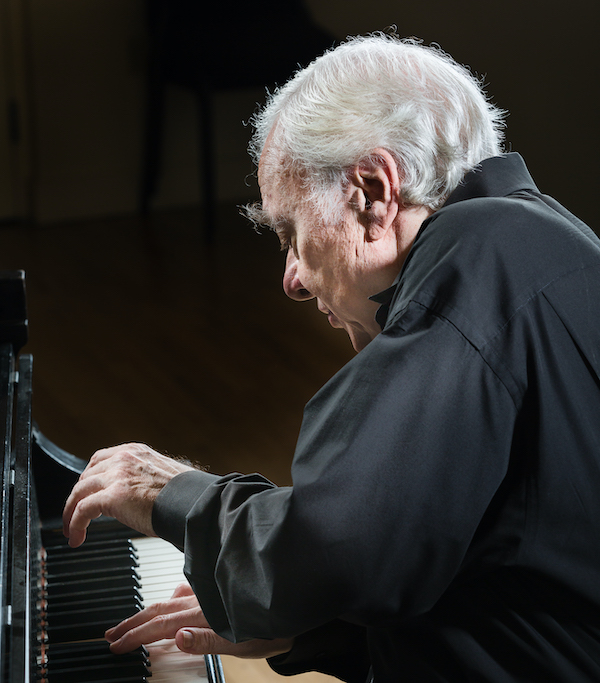Goode’s free-style Mozart with Orpheus opens 92Y season with individuality

The cool weather has felt, finally, like a normal October of memory. And the increasing proliferation of concerts adds to the sense of anticipation that life is becoming a little more familiar, if not totally normal.
The classical music scene in New York continues to wake up. Tuesday night, 92Y held their first concert of the 2021-2022 season, presenting the Orpheus Chamber Orchestra and pianist Richard Goode playing music by Mozart: the Piano Concerto No. 25, and Symphony No. 36, “Linz.”
First, though, the overture. In this case, the actual Overture to L’Amant anonyme, by Joseph Bologne, also known as Chevalier de Saint-Georges. Bologne was a prominent black European violinist and composer in 18th-century France—long seen as an historical curiosity, but Bologne was a notable musician in his own right. He has one of the most fascinating and complex biographies in all of classical music, and in popular, non-musical circles has recently been referred to as “The black Mozart.”
That is unfair to Bologne, but then the choice of opening a Mozart program with Bologne’s piece didn’t help, as the Overture is a capable but anodyne work. Orpheus tackled it with bright energy, but other than the three-section structure (which sounds like a first draft of one of C.P.E. Bach’s compact symphonies), there’s little personal character in the music, unlike, for example, the same composer’s Symphony in G Major. It’s the sort of pleasant, acceptable piece that is the staple of Top 40 classical radio, far from the best way to present Bologne.
Then came Mozart. The selections were not just full of style—in music that still has startling juxtapositions of harmonies, moods, and manners—but the performance itself from Goode was startling.
Goode and Orpheus have recorded the Mozart piano concertos, and the sound on those albums is of musicians discovering meaning in the music, and in their own responses to it. Tuesday night’s performance had that same foundation, but on stage the musicians went in brand new directions. Good and bad are irrelevant when it comes to this kind of music making, which is important and artful.
Goode’s playing was different, unusual, coherent and consistent on its own terms. The pianist wasn’t improvising his way through the concerto, but it certainly sounded like he was playing around as much as possible with what Mozart had written.
Goode eschewed one the most prominent standard qualities in Mozart, the cantabile sound of his phrasing. In the first movement, this meant an episodic approach to melodic ideas— taking them one at a time instead of stringing them together in a large-scale formal whole. In the long, exhilarating passages that rise and descend, Goode altered the tempo and articulation within interior groups of sixteenth notes—looking for something inside the music and, seemingly, enjoying the hell out of it. It sounded like Mozart played by some combination of Bud Powell and Bill Evans.
This was odd, but not off-putting in the first movement. The music didn’t sing, but it did go further into the expressive qualities, and one wanted to hear it all over again. Goode’s approach was more immediately satisfying in the Andante and Allegretto movements, and it seemed as if the slower pulse, even in the Allegretto, and lower density of notes made it easier to clearly hear what Goode was doing. The slow movements in Mozart’s concertos are places where, originally, the soloist would be expected to at least improvise ornaments, if not interpolate new phrases. Goode’s playing here sounded both emotionally deeper and even more exploratory, and there was a thrill in him reaching for distant places.
The “Linz” symphony wasn’t the same, nor could it be without a soloist to stretch the possibilities of the music. But this was a fine performance nonetheless. Orpheus’s verve and rhythmic precision were in peak form, and the colors from the woodwind section were remarkable, full of variety and texture. It was also exciting and satisfying to hear this music not only played by a smaller orchestra but in such close quarters, something much closer to the sonic experience Mozart would have known than being in a larger hall.
But this was also an example of what Orpheus loses without a conductor, with no one specific artistic stamp on the music. One did hear Mozart, but one occasionally missed hearing what a strong, intelligent personality like Goode, thought of the music.
Garrick Ohlsson and the Takács Quartet play Brahms, 8 p.m. Saturday, at 92Y 92Y.org


